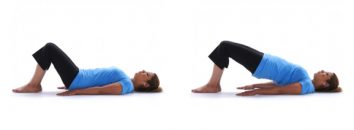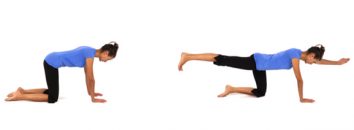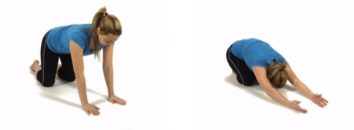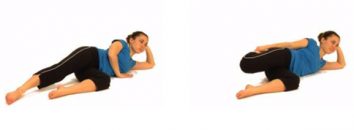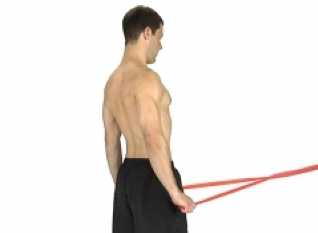Pinc & Steel – Taking on Cancer
PINC & STEEL is a cancer rehabilitation program for men and women who are receiving or recovering from cancer treatment, run by fully qualified cancer rehabilitation physiotherapists.
63 New Zealanders a day are being diagnosed with some form of cancer reports the Cancer Society. This is an alarming statistic. Thankfully due to extensive research, the management and treatment of cancer is more effective than ever, therefore making the survival rate higher.
PINC & STEEL trained physiotherapists are there to help you through your cancer journey. They will not only guide your rehabilitation, in the context of any physical or functional limitations from treatment, but also give hope, strength and courage.
The PINC & STEEL program for cancer survivorship is based on knowledge from experts in the oncology field. Individualised programs are designed to help people heal as well as possible and function at optimal levels through every stage of their treatment and recovery. The programs incorporate one-on-one physiotherapy rehabilitation and exercise prescription, progressing to specialised group exercise classes.
GETTING PHYSICAL WITH CANCER
More and more research is demonstrating the effectiveness of cardiovascular and strength training for those going through their cancer treatment. In fact, physical activity has been proven to be one of the most effective strategies for prevention and recurrence of breast cancer & bowel cancer[1].
Physical activity helps patients recover from the associated side effects of anti-cancer treatments. Individualised pilates or gym based exercise programs positively increase strength, balance and fitness. More importantly there is also the psychological effects of giving that patient back some control. In addition, exercise is very effective in reducing treatment associated fatigue, improving overall wellness and mood, increasing self-esteem, and it can decrease anxiety or depression.
This growing field of research also demonstrates that active cancer survivors have a lower risk of cancer recurrence in comparison to inactive survivors. Exercise can be from going for a walk around the block with your dog, a swim or bike ride whilst also incorporating the above gym, pilates or home-based programs catering to the needs of the individual. This includes taking into consideration type of cancer, current and future treatments, patient and specialist orientated goals, and overall wellbeing and energy levels to name a few.
If you know of someone, or are going through your own cancer journey, PINC & STEEL would be an amazing addition of support. Ponsonby Physio has been involved in the PINC program for five years now. We currently have two trained physiotherapists, and a third is completing training in his STEEL program later this year *(Update 2020: training completed!). To be qualified in this program our participating physiotherapists complete regular, dedicated professional training modules and are exposed to the latest research on treatment and rehabilitation covering all cancer types, stages and ages of people.
Here at the clinic, so many of us have been touched by cancer, or have known loved ones affected by this devastating diagnosis. Being able to gain new skills to help, support and encourage others through their own journey is one of the most rewarding parts of this job.
Please contact our clinic today to be put in touch with one of our qualified PINC & STEEL therapists.

[1] American College of Sports Medicine. “Physical Activity in Cancer Prevention and Survival: A Systematic Review.” McTiernan et al., 2019.
Participating in a social team sport as an adult is a great way to stay fit and to have a terrific time with friends. However, sometimes our bodies do not respond quite as we would like them to. Recovery can be a little slower and susceptibility to injuries higher than we might recall from our school days. An injury or a niggle that stops you playing at your best, or even keeps you off the court for the rest of the season is hugely disappointing and frustrating for both you and the team. So it’s worth discussing team sports and minimising injury risk!
To perform at your best in team sports reduce the chance of injury it’s worthwhile investing some effort and focus into improving your overall physical ability. With some smart choices you can better equip yourself for an active, full season.
It’s time to make those smart choices!
Here is your essential checklist. Every item is an important component of minimising injury and keeping you in the game:
-
- Appropriate footwear and kit
- Sport-specific conditioning and fitness work
- A dynamic warm up
- A warm down
- Intelligent modification of activity levels and load
- Use of correct technique & skills
- Good hydration and nutrition
This list is particularly interesting to the modern social athlete (that’s you!) because of concepts like ‘sport-specific’ fitness work and the ‘dynamic warm up’. These concepts are changing the way kiwi athletes of all ages and skill levels are being guided to prepare for training and games.
It makes sense to incorporate the sorts of exercises frequently used in your sport into your warm-up such as short sprints, shuttle runs and changing direction quickly. Add appropriate strengthening exercises, running and stretching as well. Plus don’t just warm-up once a week on game day. Complete a good set of warm-up activities for each training session as well.
The ACC SportSmart programme has been promoting this improved, evidence-based approach to warming up for a couple of years now. Their recommended warm-up exercises and activities are based on the FIFA 11+ warm up programme that has been shown to be highly effective in reducing a players risk of injury when completed 2-3 times a week.
The programme has been adapted for different codes in collaboration with each national sport organisation. As a result there are some excellent online resources available to everyone – take a look at NetballSmart, TouchFit 360, RugbySmart and FitForFootball. Each code is motivated to help their members be a part of their chosen sport as long as possible and get the most out of it. Central to this is taking an evidence-based more comprehensive approach to preparation.
So what does a good dynamic warm-up look like?
A dynamic warm up prepares the body and reduces the chance of injury. It should include elements of strengthening, running, dynamic preparation and sport specific activity. If for example, you’ve signed up for a local indoor-netball team, then a quick snapshot of the activities advocated as part of your warm-up are:
-
- Strengthening – bench, hamstrings, balance activities
- Running – straight ahead, hip out, butt kicks, circling, shoulder contact, forward-backward sprints
- Dynamic preparation – squats, lunges, jumping and landing and turning
- Sport Specific – running and stopping, plant and cut movements
Activities will differ between training and games. In particular you would complete the strengthening exercises for training sessions but leave this element out on game day. The warm-up takes about 15-20 minutes and there are different levels of it depending on your fitness and capability level. So as you and the team progress the warm-up activities progress with you.
For a full explanation of each activity the NetBallSmart site is worth a look.
This kind of thinking has come a long way from taking a quick jog around the field, some static stretches and then running on with the starting whistle! It’s worth thinking about and if your team isn’t already incorporating some of these recommendations into weekly training and pre-game prep… maybe it’s time.
When to come and see your Physiotherapist:
No matter how much preparation and strengthening we do, niggles and injuries will still occur. If you require an assessment of a new sprain/strain/pull, which hasn’t resolved with rest, ice, elevation & compression over 24-48 hours then come and see us for assistance. There will also be situations where you need advice on managing an old injury or assessment of pain that hasn’t resolved in more than 2 weeks.
Our physiotherapist team can also provide support with both prep tissue work pre-event and recovery tissue work post event. Plus advice & assessment for taping or strapping correctly if needed.
Our goal is to support you to have another successful and fun social sport season – no matter what your level or age. Game on.
With the development of many cycling trails in New Zealand and with cycling being a great form of exercise for many, it is not hard to see why cycling is a growing sport. So we’ve put together these cycling tips for you.
Cycling plays a big part in the rehabilitation of many injuries most commonly with regards to knee injuries but also for those that struggle to run or play sport like they used to. Cycling is a non-weight bearing sport and this allows people to do so without pain.
There is also the joy factor of just being on a bike and seeing the sights around our wonderful countryside!
In terms of niggles that people tend to present with relating to cycling – the lower back, hips, knee and neck seem to be the most common areas. Sometimes accidents do happen and falls off a bike might result in shoulder injuries, bruises, scraps and sometimes broken bones.
So how can you help yourself to avoid developing some of these annoying niggles and injuries?
-
Bike set up and equipment
The essential starting point! Making sure that your bike is the right size for your body and getting the correct seat height and resulting body position on the bike are very important. Being comfortable on your bike is going to make it much easier and more enjoyable to continue getting out there. Think about your shoes, saddle, handle bar width, pedal systems and overall body position on the bike.
-
Training load
This is an important element to consider for those that are new to the sport and, also to those that have been riding for a long time. Because cycling is non-weight bearing, the impact load on the soft tissues and joints is much less than say with running. This can be where people get into a little bit of trouble. People can often do too much too soon and overload themselves without having done a little conditioning work and taking time for the body to build strength and endurance on their bike. Having a simple training plan and keeping note of training rides can be a useful tool.
Knowing how to use your bike also fits into this arena. Being aware of how to use gears, brakes, how to corner, descend and change positions during climbing can be helpful to take some stress off the body. Gears is a common area that people tend to get told different things from different people. If you are new to cycling then it is better to try and work on getting used to spinning at a cadence of between 90-100rpm on the flats and somewhere in between 70-80rpm on hills. Pushing a gear that is too hard puts pressure on knees and can often lead to iliotibial band niggles.
-
Prevention is better than cure
If you are starting out in cycling it is good to have a bit of an idea of your strength and flexibility and background of previous activity levels and fitness.
Cycling is an unusual position to be in for long periods of time and like most sports it requires some work on strengthening and stretching to help keep our bodies injury free.
At Ponsonby Physio we offer a bike set up service and strengthening and stretching exercises specific to cycling and individual needs as well as helping people develop a sense of what training load is and how to monitor it.
Here are just a few examples of stretches and strengthening exercises useful for those that like to cycle.
The Glute Bridge:
Lie on your back with your knees bent. Contract and then lift your buttocks off the ground until the body is in a straight line. Slowly return to your initial position and repeat.
The Stabilisation Multifidus:
Get on your hands and knees with back in neutral position (slightly arched) and chin tucked in. Activate your core, then lift one leg backwards and the opposite arm forward. Return to the initial position and repeat with the other leg and arm.
Latissimus Dorsi Stretch:
Start on your hands and knees. Bring the buttocks on (or as close as you can) to your heels and stretch the arms out in front as far as possible with palms up. Keep your head down and aligned with your spine.
Quadriceps Stretching:
Lying on your side hold your top ankle and pull your foot towards your buttocks until you feel a gentle stretch on the front of the elevated leg. Hold the stretch, keeping your lower back neutral. Then return to the initial position.
For a full review of the right stretches, conditioning exercises and bike set-up for you, make an appointment with one of our experienced Physiotherapists. We look forward to sending you on your bike!
Below are five helpful exercises to improve your posture by strengthening core supportive muscles and structures, allowing you to ‘hold’ yourself in an optimal position – which minimises the stress on your body.
- Elastic Pull-down – this a good strengthening exercise for around the shoulder blades that will help to remind you to counteract the rounded posture we often adopt with sitting.
Stand in a good upright posture, knees slightly bent, lower core engaged, breastbone lifted, chin tucked to neutral, and hold this posture throughout the exercise. Do not let the chin poke out.
Hold the ends of the elastic, with the elbows straight and palms facing down.
Initiate the motion with the shoulder blades, opening up through the front of the shoulders, drawing the blades backward. Do not shrug or raise your shoulders. Then slowly pull the arms down to your sides, not behind. Pause at the end of the movement, then slowly return to the starting position.
Concentrate on the pattern of the movement controlling your head and neck posture before increasing the resistance.
- Sit to stand – it is important to keep using our big thigh muscles to help us move and stand. This is a good exercise to keep them strong and place less stress on other areas of our body. Repeat the movement and it starts to strengthen the muscles
Sit on a chair that have been placed against a wall to prevent slipping.
Interlace your fingers and reach forward with your arms. With your feet slightly apart and your hips at the edge of the seat, lift your hips up from the seat to stand. Slowly return to sitting. Repeat.
- Back muscle strengthening – this exercises engages our central support cylinder and reminds us to use those muscles for when we are moving.
Get on your hands and knees (four point position) with your knees directly under your hips and your hands directly under your shoulders.
Your back is in neutral position (slightly arched) and your chin must be tucked in.
Activate your lower abdominals (transversus abdomini) by bringing your belly button inward and by activating your pelvic floor muscles 20 to 30% of maximal contraction.
Maintain a steady abdominal breathing while you lift one arm overhead, keeping your back in neutral position and your chin tucked in.
Return to the initial position and repeat with the other arm.
Return to the initial position and then sliding one leg out behind you while maintaining a neutral position.
- Thread the needle – Our middle backs often get stiff with sitting posture and this exercise encourages some rotation and movement in our mid back region.
Start in a four point position with your hands directly under the shoulders and the knees under the hips.
Keep your chin in, back straight and shoulders back.
With one arm reach under the other as far as possible rotating and rounding your upper back.
Bring your arm back and reach back in the opposite direction as far as possible.
Keep your elbow bent to 90 degrees and look at your moving hand at all times.
Repeat with the other arm.
- Retraction/elongation – With all the time we spend at computers we can often find our chin poking out and this is a simple exercise to remind us to bring our head back to mindline position and think about being tall.
Stand or sit tall. Focus on an object at eye level while you slowly tuck your chin inward and pull yourself up as if there is a rope pulling the back of your head upward. Maintain the position and relax.

